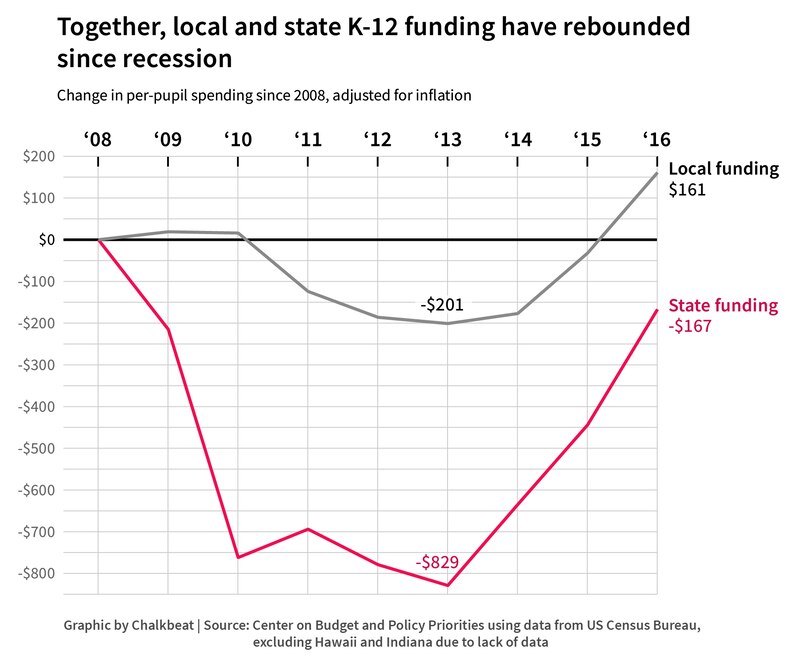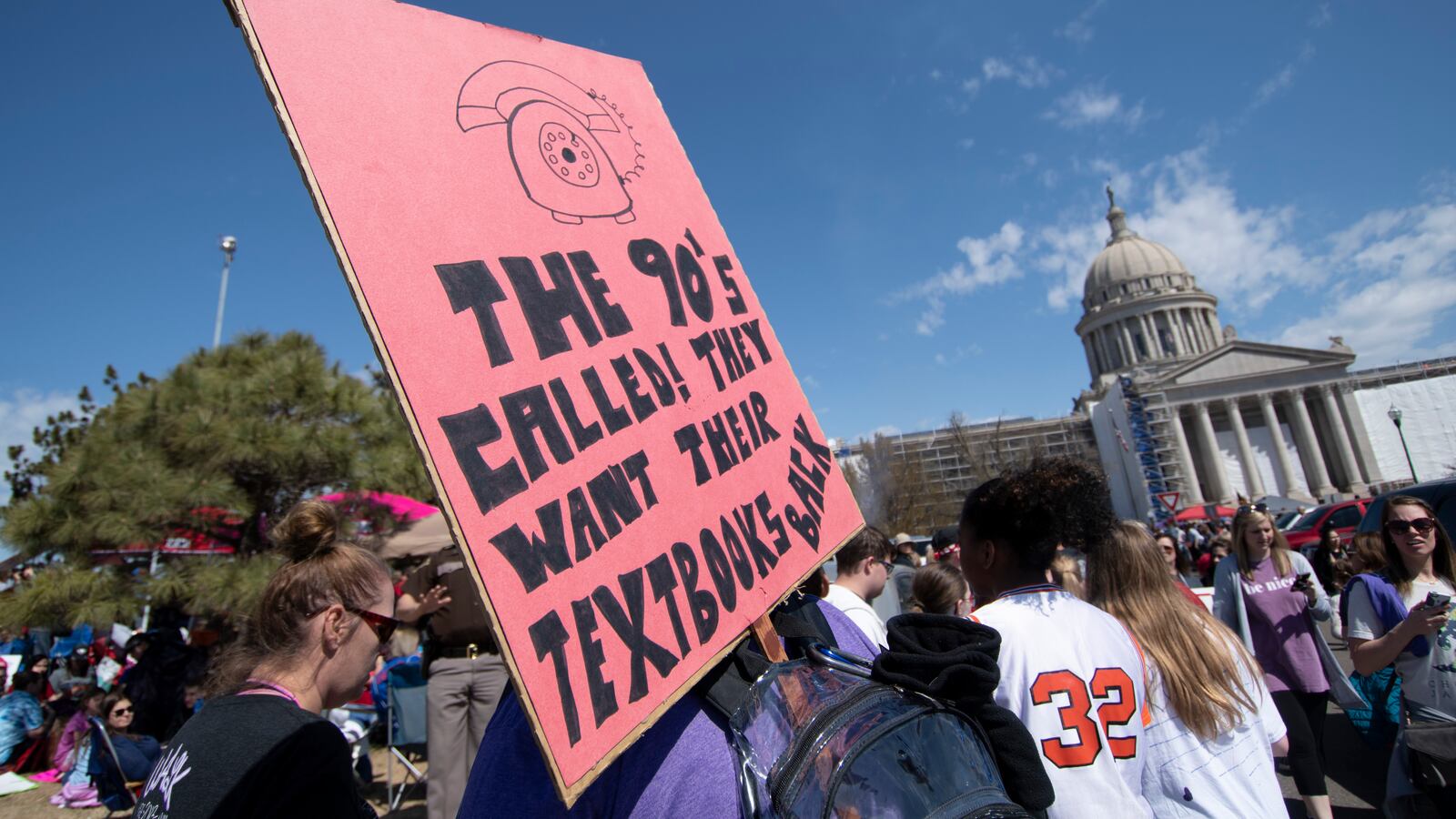In four states where teachers walked out of their classrooms in protest last year, education spending is up, helping to make up for deep cuts in those states in the wake of the Great Recession.
That’s according to a new analysis that suggests the walkouts and strikes made a difference in Oklahoma, Arizona, West Virginia, and North Carolina. The report from the Center on Budget and Policy Priorities, a progressive think tank, found that baseline state funding jumped 19 percent in Oklahoma last year, while North Carolina and West Virginia both saw 3 percent upticks.
Still, some states have a ways to go to reach their 2008 spending levels.
“Most of the teacher-protest states had cut their formula funding so deeply over the last decade that even last year’s sizeable funding boosts weren’t enough to restore funding to pre-recession levels,” researchers Michael Leachman and Eric Figueroa write.
This year’s report, released Wednesday, focuses on K-12 education spending at the state and local levels as the national spotlight remains on stagnant teacher pay.
It shows that in five walk-out states, less money was being sent to schools through state funding formulas in 2019 than in 2008 — an indication that schools there had been squeezed for years. Four of those states saw state funding rise last year after pressure from teacher activism.
“Over a 10-year period, public education funding in Oklahoma had been cut [by] about a billion dollars,” said Alicia Priest, the president of the Oklahoma Education Association. “They were cutting curriculum like fine arts, world languages, AP classes — all the cuts that could be made, had been made.”
But with teacher protests looming lawmakers there passed a tax increase about $400 million to boost teacher pay. “It was a great start,” Priest said.
The report also looks at the combination of both state and local dollars flowing to states between 2008 and 2016. (Combined, state and local funding account for over 90 percent of what schools receive.) Here, there is a relatively good news for funding advocates: By 2016, a majority of states — 26 — were spending more per student than they were before the Great Recession, adjusted for inflation.
That includes Illinois (where funding was 21 percent higher in 2016 than in 2008), New York (15 percent higher), Pennsylvania (11 percent higher), and California (9 percent higher).

But plenty have not recovered. States where state plus local funding was lower in 2016 than it was pre-recession include Arizona (23 percent lower), North Carolina (18 percent), Oklahoma (13 percent), Colorado (1 percent), and Kentucky (0.3 percent) — all states with significant teacher protest over the last two years.
West Virginia, another walk-out state, experienced a 3 percent total funding increase over that time.
A wave of research in recent years has found that increases in school spending improve students’ test scores and graduation rates. Decreases in spending in the wake of the Great Recession led to declines in both.
This week, the American Federation of Teachers launched a national campaign to support education funding increases.
The report warns that some of the states that have boosted spending are relying on one-time funding sources. But those wins have helped inspire a near-continuous wave of teacher activism, including recent city-level strikes in Los Angeles, Denver, and Oakland — which have also focused on issues beyond funding, including charter schools and school closures. “We are worried that there will be backsliding,” said Priest. “After 10 years of cuts, it’s going to take several years of investments to bring class sizes down.”


